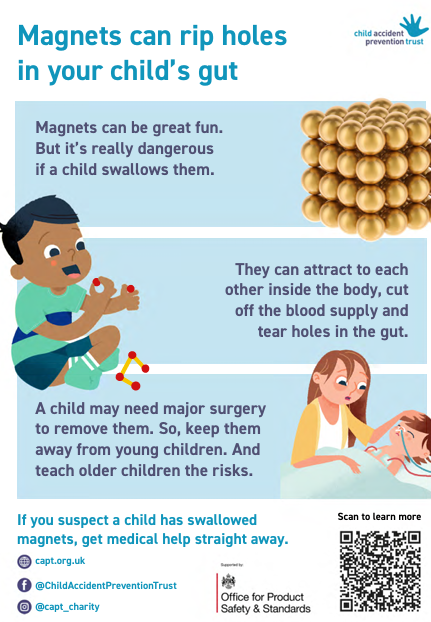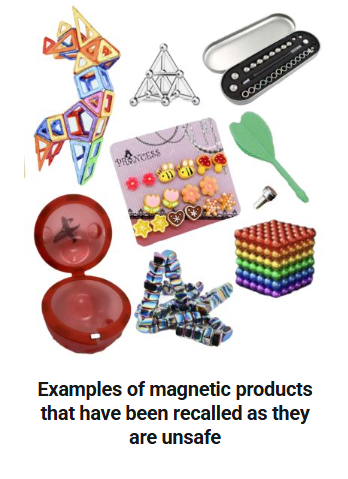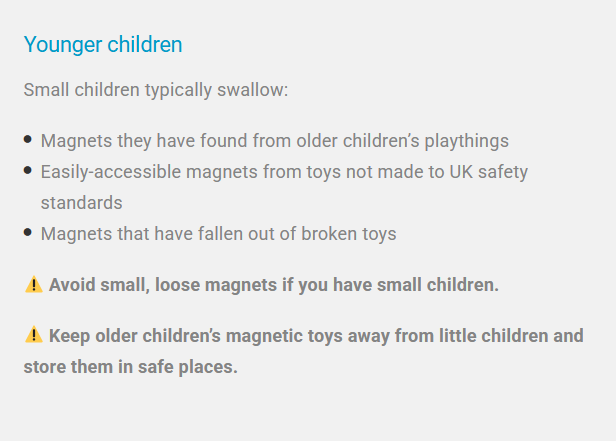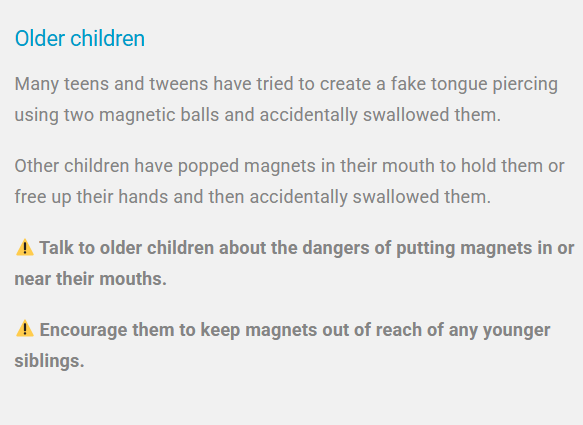Magnets safety

What are the risks?
Super strong magnets can rip through a child’s gut if they swallow them, causing life-threatening injuries. One eight-year-old boy died after swallowing magnets.
The magnets stick together inside the body and cut off the blood supply, causing tissue to die.
Children may need complex surgery to remove the magnets and some experience life-changing internal injuries.
For example, a one-year-old baby who swallowed six small magnets needed seven hours of emergency surgery and was left with a stoma bag.
Children of all ages are at risk – from babies and toddlers to tweens and teens.

How big is the problem?
Pioneering research by NHS doctors has revealed that, in a single year, over 300 children were admitted to A&E after swallowing magnets and 1 in 10 needed life-saving surgery.
The more magnets a child had swallowed, the greater the danger.
Studies in Europe and America have shown that increasing numbers of children are swallowing magnets. Doctors worry we are seeing the same increase here in the UK.
Why are dangerous magnets on sale?
We tend to think: If I can buy it, it must be safe. Sadly, that’s simply not true.
While there are legal limits for magnetic toys, unless you buy a trusted brand name or from a reputable retailer, you cannot be sure the magnets are safe.
Watch out for cheap copies of popular toys. They may not be made to UK safety standards. Strong magnets may be loose or toys may break exposing strong magnets.
And magnets are found in all sorts of products, not just toys for children. For example, jewellery-making kits, dartboards, fridge magnets, puzzles and board games, fidget toys, office desk toys and stress relief gadgets.
Shockingly, super strong magnets can be 17 times stronger than UK safety limits. We’ve found magnets with a flux of 850 when the limit is 50.
Online marketplaces aren’t yet required to vet the safety of the products sold on their platforms.

How do these accidents happen?
Young children aren’t being ‘naughty’ when they swallow magnets. It happens by accident.
And it’s not because the adults around them aren’t looking after them properly either. Accidents can happen quickly, even when you’re nearby.
Younger children can mistake magnets for brightly coloured sweets, or they can be curious what they feel like on their tongue.
Older children may want to imitate a tongue piercing. Perhaps copying something they’ve seen in the playground or on social media.


